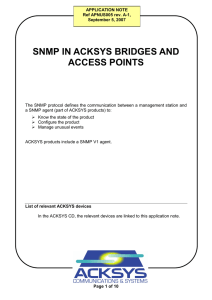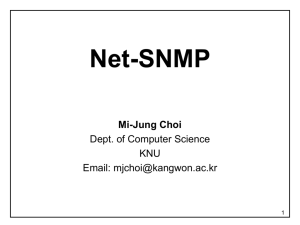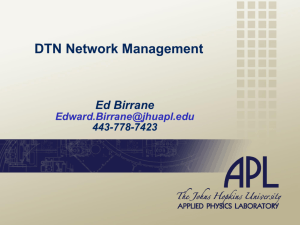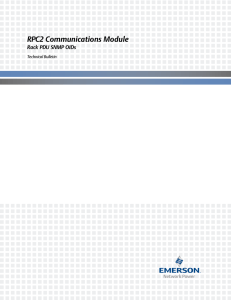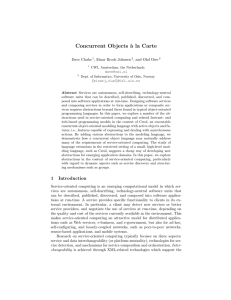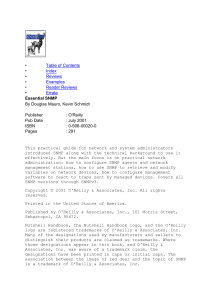Applications in Network Discovery Using Perl and Net
advertisement
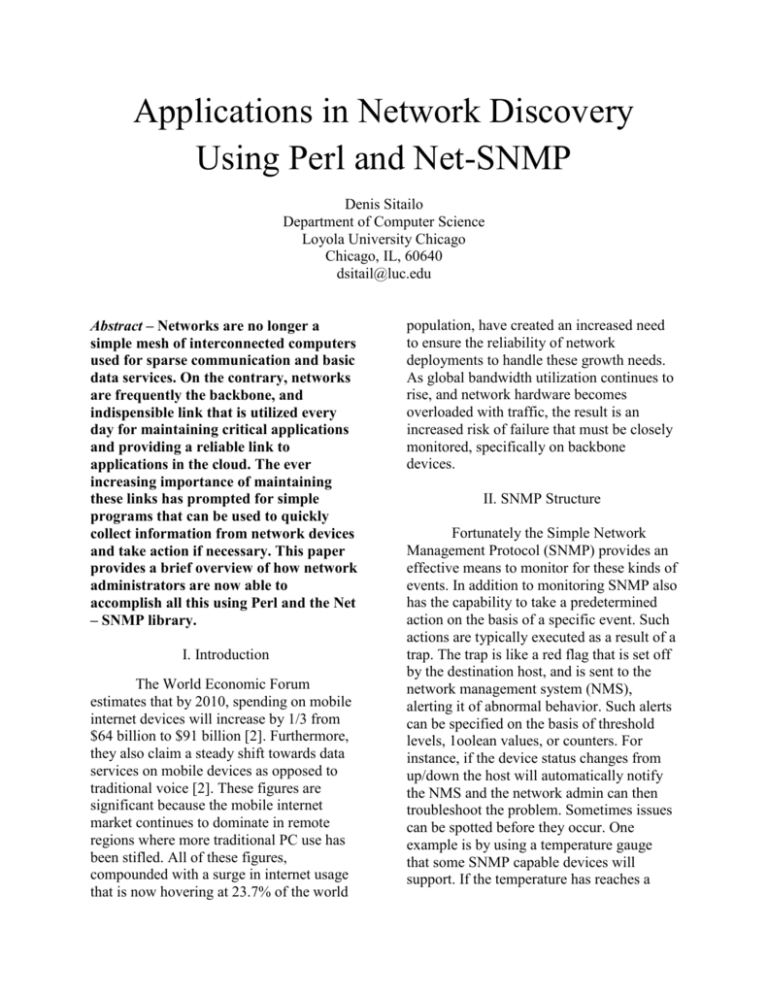
Applications in Network Discovery Using Perl and Net-SNMP Denis Sitailo Department of Computer Science Loyola University Chicago Chicago, IL, 60640 dsitail@luc.edu Abstract – Networks are no longer a simple mesh of interconnected computers used for sparse communication and basic data services. On the contrary, networks are frequently the backbone, and indispensible link that is utilized every day for maintaining critical applications and providing a reliable link to applications in the cloud. The ever increasing importance of maintaining these links has prompted for simple programs that can be used to quickly collect information from network devices and take action if necessary. This paper provides a brief overview of how network administrators are now able to accomplish all this using Perl and the Net – SNMP library. I. Introduction The World Economic Forum estimates that by 2010, spending on mobile internet devices will increase by 1/3 from $64 billion to $91 billion [2]. Furthermore, they also claim a steady shift towards data services on mobile devices as opposed to traditional voice [2]. These figures are significant because the mobile internet market continues to dominate in remote regions where more traditional PC use has been stifled. All of these figures, compounded with a surge in internet usage that is now hovering at 23.7% of the world population, have created an increased need to ensure the reliability of network deployments to handle these growth needs. As global bandwidth utilization continues to rise, and network hardware becomes overloaded with traffic, the result is an increased risk of failure that must be closely monitored, specifically on backbone devices. II. SNMP Structure Fortunately the Simple Network Management Protocol (SNMP) provides an effective means to monitor for these kinds of events. In addition to monitoring SNMP also has the capability to take a predetermined action on the basis of a specific event. Such actions are typically executed as a result of a trap. The trap is like a red flag that is set off by the destination host, and is sent to the network management system (NMS), alerting it of abnormal behavior. Such alerts can be specified on the basis of threshold levels, 1oolean values, or counters. For instance, if the device status changes from up/down the host will automatically notify the NMS and the network admin can then troubleshoot the problem. Sometimes issues can be spotted before they occur. One example is by using a temperature gauge that some SNMP capable devices will support. If the temperature has reaches a critical level, this may be a sign of an impending hardware failure. In general, SNMP devices are designed to manage individual objects on the device. These objects are commonly referred to as object identifiers (OID’s), and they are programmatically configured in a logical grouping known as a management information base (MIB) file [1]. The MIB file can then be loaded onto a managed device to facilitate the necessary monitoring of the OID’s defined in the MIB. OID’s within the MIB are organized according to a hierarchical standard known as SMIv2. The result is a tree hierarchy of objects, sharing a series of common root nodes. Many of the most frequently used OID’s reside under the MIB2 branch of the tree, which has a corresponding OID of 1.3.6.1.2.1. This node contains OID’s pertaining to interface, system, IP, TCP, and UDP, among others. Most importantly, MIB files are highly customizable. Given that all MIB files and OID declarations must follow the same standard, it is very common for network administrators to add in their own OID definitions as long as the hardware can support them. Many of these definitions are typically found in the private tree node under OID 1.3.6.1.4. This node is generally reserved for large network equipment vendors such as Cisco. These vendors have their own OID address, under which they can define their own custom MIB’s pertaining to their line of devices. In fact, Network Instruments praises SNMP for its non-proprietary framework and crossvendor support [3]. III. Applications Knowing how to leverage the functionality described above can be invaluable for even a seasoned network administrator, and all it takes is the right set of tools. By using Perl and the Net-SNMP package, a network administrator can write scripts to configure traps, queries, or sets for devices on the network. In order to write such a script, several things are necessary: an SNMP capable device, an iReasoning MIB Browser, and an IDE configured to support Perl and the Net-SNMP module. The iReasoning browser provides a GUI that can be used to connect to the agent and retrieve the OID values necessary. This tool is very useful because it shows the information, address values, and data types that will be later pulled by the script. When writing the script, the first step is to establish a connection with the agent to form an SNMP session. Once the session is established, the script can use OID values to query the agent by using standard SNMP commands such as get, get-next, get-bulk, etc. One of the most efficient ways of obtaining device information is by creating a VarList that will extract the necessary varbind pair (OID, value) and will temporarily store the data in the current iteration. To extract the value from the varbind component, a get request can be used, and the value can then be stored in an array for later access. In a simple query request, this data can then be printed to the screen. Certainly, scripts can be written to handle more sophisticated scenarios such as setting values on agents, or kicking off other queries all based on the results of a single query or trap. In final analysis, both Perl and Net-SNMP provide a powerful platform for network administrators to help anticipate, monitor, and resolve potential issues on their networks, ensuring that even if a failure occurs, its effects will be short lived. References 1. Mauro, Douglas, and Kevin Schmidt. Essential SNMP. 1st ed. O'Reilly & Associates, 2001. 17. Print. 2. "MOBILE INTERNET FOR GROWTH: PROJECT REPORT." Bain & Company. 001 2009. World Economic Forum, Web. 7 Dec 2009. <http://www.bain.com/bainweb/PDFs/cms/P ublic/WEF_2009_Mobile_internet.pdf>. 3. "SNMP Monitoring: One Critical Component to Network Management." Network Instruments, LLC, Web. 7 Dec 2009. <http://www.netinst.com/assets/pdf/SNMP_ WP.pdf>. .


